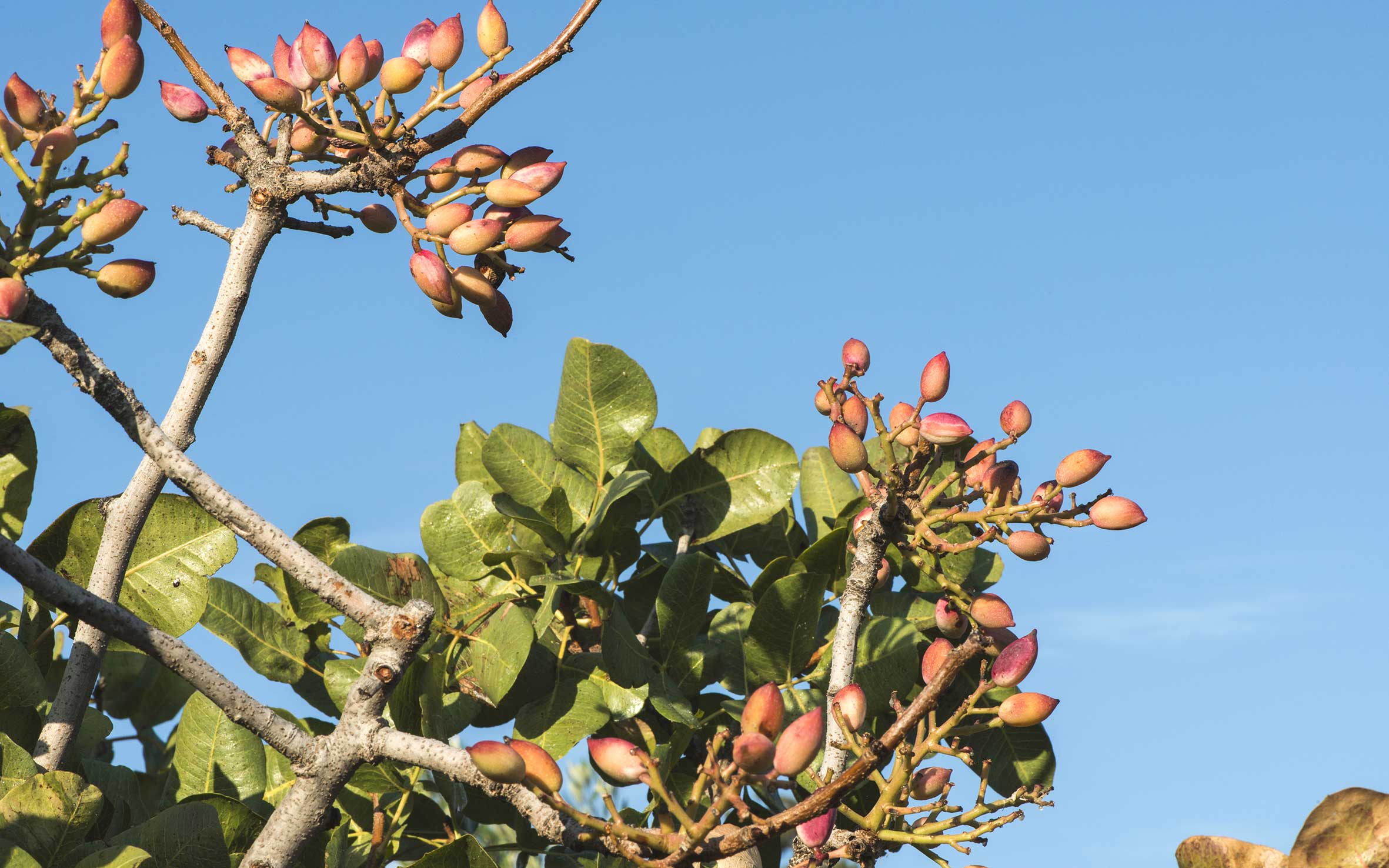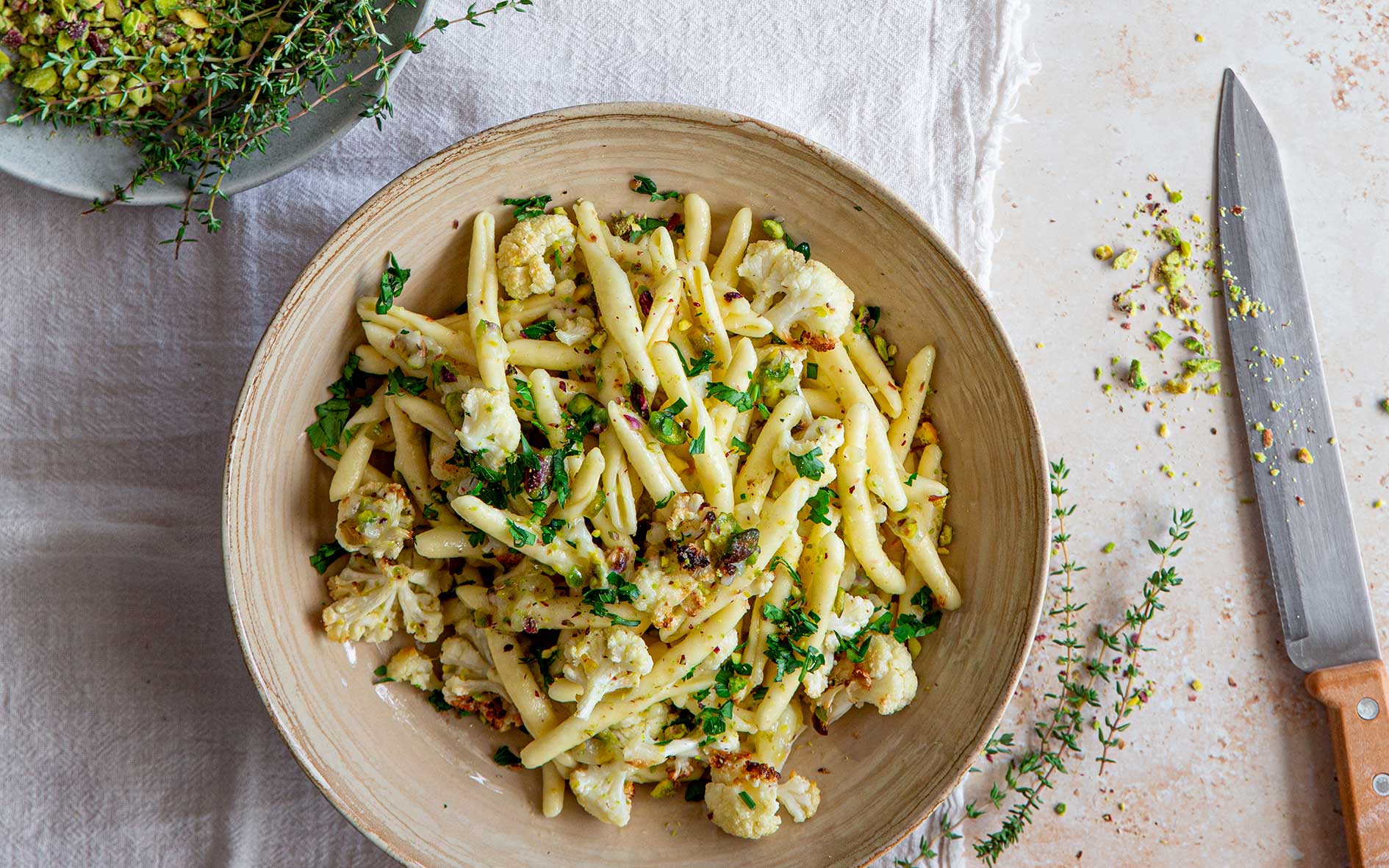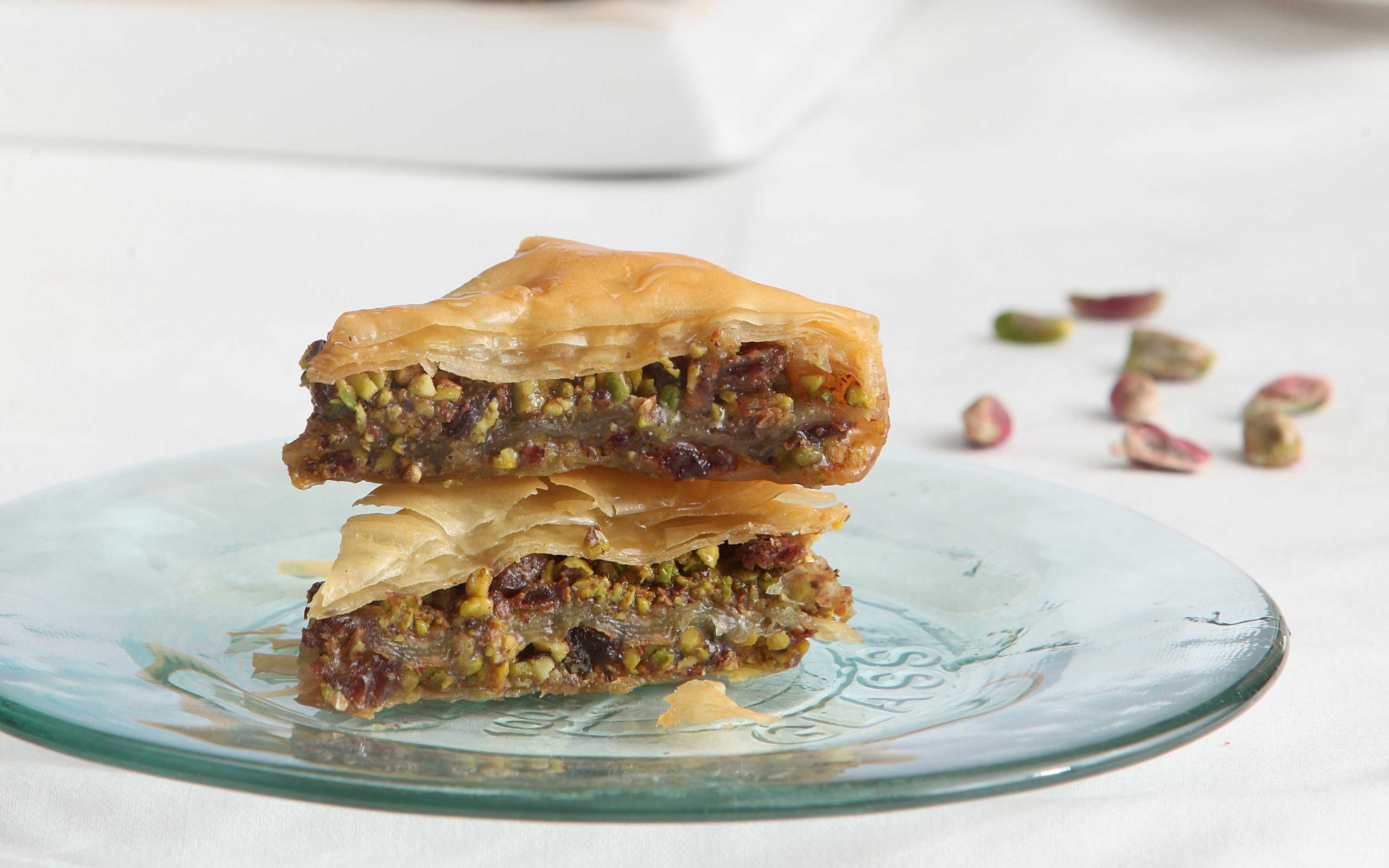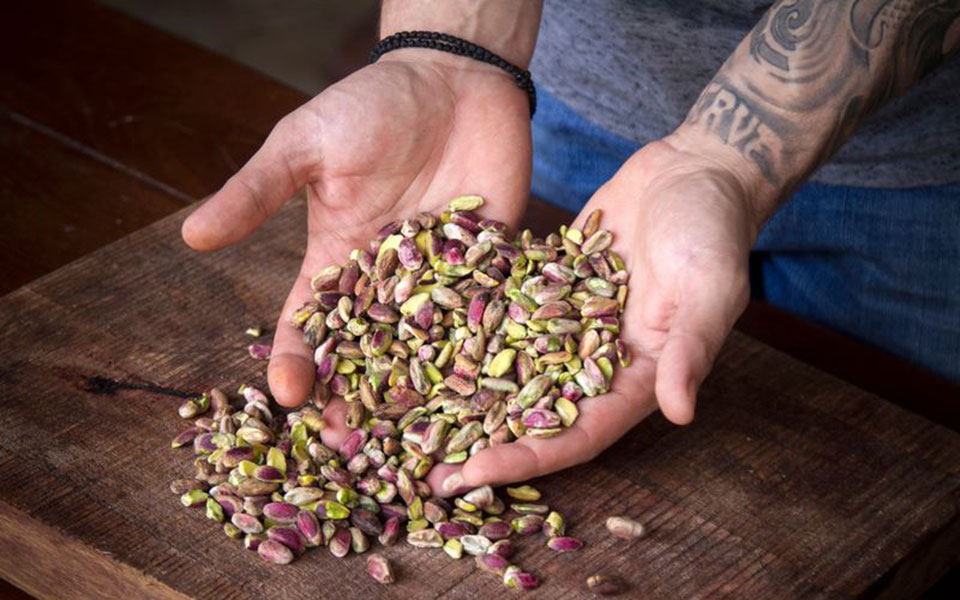Some Greek products truly place among the best in the world. We’re sometimes ashamed to claim it, afraid of sounding like we’re exaggerating or flag-waving, but what can we do? It is the truth. Olive oil and honey are the most famous perhaps, but there are more; one of them is the pistachios from the island of Aegina.
The history of the pistachio tree
The pistachio tree originally had Persian roots (literally) but later spread to the whole of the Middle East. To the Greeks, it was known as the Theophrastus tree, named for the ancient philosopher often referred to as the father of botany, and it was especially popular in Byantium. It’s a vulnerable tree, and its cultivation requires very specific soil and climatic conditions; it thrives in sandy porous soils with good drainage. It does not like moisture – on the contrary, due to its large root system, it withstands drought well, even better so than the olive tree.
The tree first arrived on Aegina in 1896, brought to the island by the doctor Nikolaos Peroglou. In 1916, he published a book on pistachio farming and decided to popularize its cultivation. He urged the locals to plant pistachio trees, distributed cultivars from his best trees, and when he wanted to give a gift, he gave a sapling. Two such trees, gifted by Peroglou, still exist in the city of Aegina. The main reason farmers followed his advice was the high price of pistachios at the time. Back then, bread cost 0.75 cents and pistachios 3-4 drachmas. Little by little, the farmers replaced their olive trees and vines with pistachio trees.

© Shutterstock
A Protected Designation of Origin product since 1997
In 1947, the Aegina Agricultural Cooperative of Pistachio Producers was founded. Fifty years later, in 1997, the Aegina pistachio becomes a Protected Designation of Origin (PDO) product. In 2008, the association Active Citizens of Aegina organized a conference titled “Hang on in there poor pistachios,” the aim of which was a discussion about anything related to the cultivation of the tree. A delegation of pistachio producers from the Sicilian town of Bronte, located at the foot of Mount Etna, participated. Introduced for the first time to wider marketing strategies of the Italians, the producers from Aegina were inspired. The idea of creating a pistachio festival is born.
Since then, every year at the end of the harvest in September, the “Fistiki Fest” now brings pistachio producers, foodies, musicians, artists and more to the Saronic island.
In recipes, the Aegina pistachio can be used as an ingredient in a multitude of ways. It may be turned into a fragrant pesto to add punch to meats and pasta; it can serve as a delicious “crust” on grilled meats; and it goes wonderfully in green salads and with beets. Even more commonly used in baking, it is a popular ingredient in cookies, cheesecake and traditional pan-baked syrupy sweets like ravani (semolina cake).
Below are two recipes where the Aegina pistachio shines:

© Photo and Food styling: Amaryllis Tsegkou
“Skioufikta” Macaroni with Cauliflower and Aegina Pistachios
Chef: Panagiotis Siafakas
Ready in: 35 minutes
Serves: 4
Skioufikta are a traditional type of macaroni which can be found these days in any Greek supermarket. You can replace them with your preferred type of pasta.
Method
Preheat your oven to 200°C and cover a baking sheet with parchment paper.
Place your cauliflower on the baking sheet, drizzle it with olive oil, and sprinkle with thyme, salt and pepper.
Roast the cauliflower for 15 minutes. Then add the pistachios and cook for another 5 minutes.
Meanwhile, in a pot with plenty of salted water, boil your pasta according to the producer’s instructions. When it’s done, set aside about 70 mililiters of the pasta water, and strain your pasta. Pour the pasta back into the empty pot.
In a bowl, stir together the cream, graviera cheese and the pasta water. Pour the sauce over the pasta.
Add the cauliflower and the pistachios, and mix.
Sprinkle with parsley and serve.
Ingredients
400 g skioufikta, or pasta of choice
300 g cauliflower, cut into small pieces
100 g Aegina pistachios, chopped
1 tbsp. dried thyme
3 tbsp. heavy cream
100 g graviera cheese, grated
1 tbsp. olive oil
salt and freshly ground pepper

© Photo: Akis Orfanidis, Food styling: Ilias Demirtzoglou
Baklava with Aegina Pistachios, Dates and Honey
Chef: Nena Ismyrnoglou
Ready in: 5 hours
Makes: 1 pan
You know baklava, but we bet you haven’t had it quite like this before. Generously stuffed with Aegina pistachios and dates, it also unexpectedly features a teaspoon of cayenne pepper.
Method
First, stir together the ingredients for the filling.
Preheat your oven to 160° C.
Melt the butter in a small pot, and use a bit of it to lightly grease a baking pan (ca 30×40 cm).
Brush your phyllo sheets with butter, and place the first four sheets in the pan. Cut off the edges if they don’t fit.
Pour half of the filling onto the sheets, and cover with another three buttered phyllo sheets.
Add the rest of the filling, and cover with the remaining, buttered phyllo sheets.
Pour any remaining melted butter over the baklava, cover the pan with plastic wrap, and place in the fridge for 10 minutes, for the butter to cool.
Uncover the baklava, and cut it, all the way through, into portions.
Bake for about 1,5 hour, until golden.
Syrup:
Add add the ingredients for the syrup to a small pot, and bring to a boil over high heat. Keep cooking for about 4 minutes from the time it starts boiling.
Remove the lemon peel, and strain.
Pour the syrup over the baklava while it’s still hot from the oven.
Set aside for about 3 hours, to soak up the syrup.
This article and recipes were previously published in Greek at gastronomos.gr.
Ingredients
10 phyllo sheets (450 g)
400 g butter
for the filling:
300 g Aegina pistachios + 50 g walnuts, roughly chopped
120 g dates, without their pits, finely chopped
1 tsp. groud ginger
1 tsp. ground cinnamon
1 tsp. ground cayenne pepper
1/4 tsp. ground cloves
for the syrup:
500 g sugar
60 g honey
400 ml water
The peel from 1 lemon











